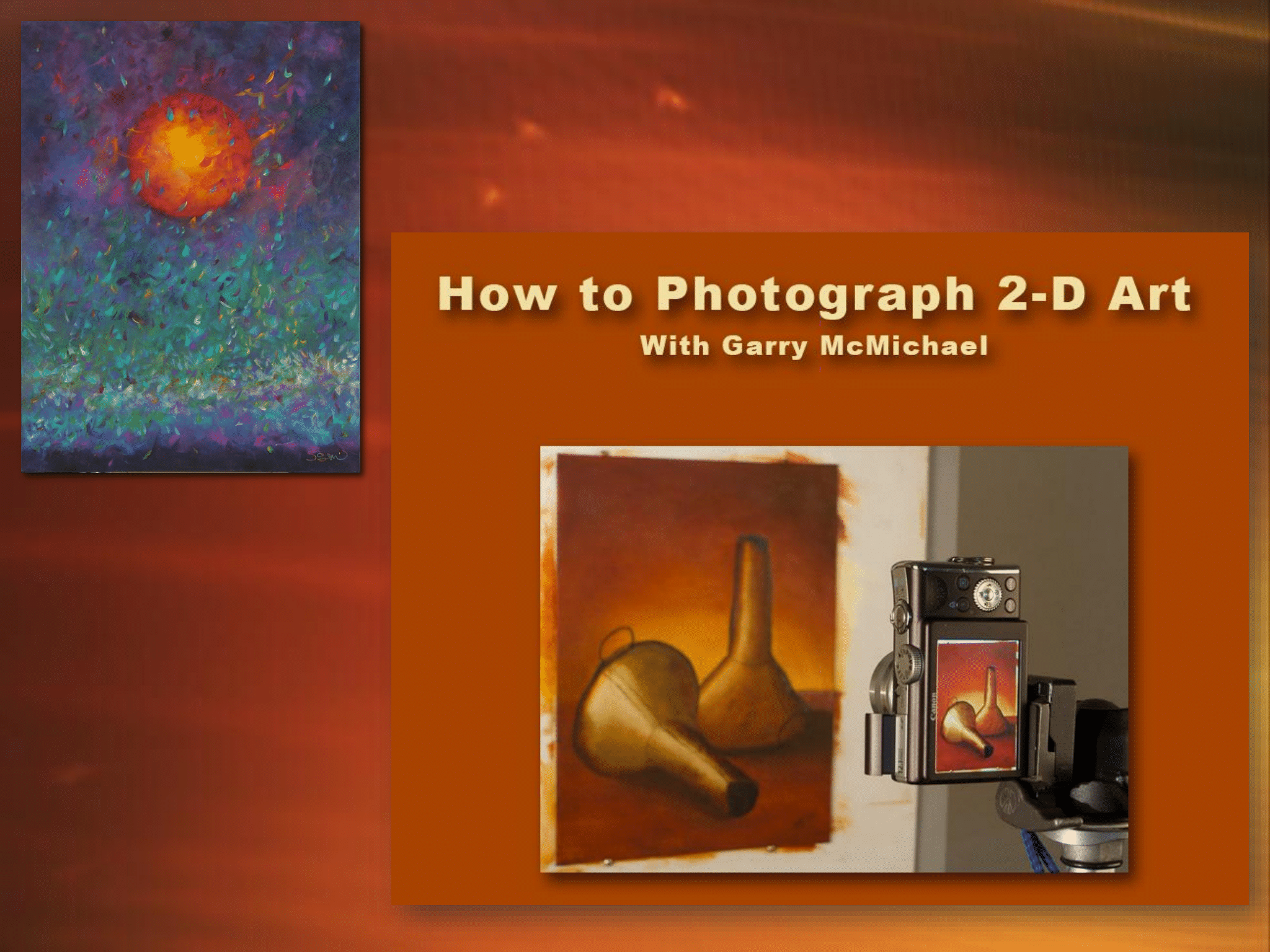Proper lighting is essential
If you are shooting your work indoors, do so in a room with plenty of windows and natural light. You will still need the additional lights as lighting from windows on one side of the room will cast more light on one side of the artwork creating an uneven or mixed lighting situation. Some artists also enjoy photographing their work outdoors when it is cloudy or overcast, as indirect sunlight provides the best lighting. Natural light can be a beautiful way to photograph your work as long as it is indirect. However, making sure your work is completely vertical can be a challenge outdoors.

If the weather isn’t cooperating, or if you are up against a late-night deadline, you will need to set up a lighting kit. The good news is, you don’t have to spend a ton for a professional setting if you aren’t ready to invest in one. In fact, you probably have the key element you need-day light (5500K) light bulbs!
All you will need is two (5500 K) lights at a minimum for 2-dimensional work. If your piece is large, you may need more lights. I have used lighting stands that you often see in dorm rooms (the ones with three adjustable bulbs) or clamp lights. They are available from hardware stores as well as artist supplies stores. Place the lights halfway between the camera and the canvas at a 45-degree angle pointing toward the wall (this will help eliminate shadows and “hot spots” on the painting). If you have umbrellas for your lights, attach them now. If you do not have umbrellas but still need to diffuse the light a bit, a white sheet hung in front of the lights will also work. However, be sure not to cover the light with the sheet as that is a fire hazard.

I leave this set up in a corner of my studio so that when I finish a painting, I photograph it right away.
Set your camera to auto white balance. As shown in the example, the choice of lightbulb is critical to the final image. Incandescent lights are yellow in color temperature, warm lights skew to the warmer temperatures. 5500K light bulbs are the temperature of natural daylight and are probably the light bulbs you already have in your studio!

If you set your exposure correctly, there should be no need to adjust the exposure in post processing. Making adjustments to the photo data after the image is taken should be kept to a minimum to avoid artifacts. Ideally, you want your exposure meter to be centered or at 0. Adjusting exposure can really alter the image as shown below.

Glare and reflections cause light difficulties not easily fixed in post processing. This is one reason flash is not recommended unless you have a balanced, preferably electronic, flash you can bounce properly. Many painters will photograph their work before applying the varnish just to decrease the glare and avoid the problem. Certainly, it is best to photograph the work before it is behind glass. Another option you have is to set a dark curtain or sheet behind you as the photographer to eliminate reflections.

Once you have your lighting set up properly, now it is time to set up the camera.



